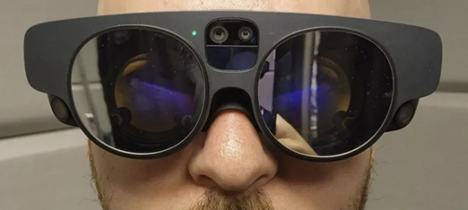
Earlier this month, a bunch of LinkedIn posts tipped me off to a potential major layoff at AR company Magic Leap. Eventually, it was confirmed by Bloomberg that Magic Leap had laid off 75 workers, including the company’s entire sales and marketing departments. The initial reports, including my own, found that Magic Leap had also laid off its entire government and defense teams and that there was a pivot away from AR headsets. A spokesperson for Magic Leap confirmed the cuts to Bloomberg, noting that the company has adjusted its strategy “to better align with market dynamics and emerging opportunities.” Furthermore, the company confirmed, “We have consolidated our frontline engagement to our developer support and care teams.”
This statement is a clear indication that Magic Leap is effectively done as a headset manufacturer and that its only engagement with customers will be to maintain existing relationships. The only way that Magic Leap can move forward as a company now is to keep licensing its technology to competitors—and, likely, to sell off assets. This isn’t necessarily a surprise when you consider that the company has been struggling since 2020, when it laid off 1,000 workers—half its workforce at the time—to pivot towards the enterprise market after years of failures in the consumer space.
Shifts in Strategy and CEOs
Back in 2020, Magic Leap hired former Qualcomm and Microsoft executive Peggy Johnson as CEO to try to steer the company in its new direction, but late last year the company replaced her with former Bain Capital executive Ross Rosenberg. This was the first sign that Magic Leap was likely preparing for some sort of sale or wind-down of operations. The company went from a skilled operator in the enterprise and technology space to an operations guy who has lots of experience in managing assets.
In that context, it also came as little surprise in May when it was announced that Magic Leap had signed a strategic agreement with Google to license some of Magic Leap’s augmented reality display IP to the search giant. Some industry watchers say this was a last-ditch effort to monetize the company’s IP, which is ironic because Google was both an initial investor in Magic Leap and, pre-COVID, discussed acquiring the company for billions of dollars.
The Perils of Overpromising and Underdelivering
The fundamental problem with Magic Leap is that it overpromised and underdelivered—and did so on such a colossal scale that there was almost no coming back from it. Since its inception, the company has gone through more than $4.5 billion, which is of course a lot of money but doesn’t seem like that much when you compare it to what Meta and Apple have spent on XR. One major problem was that Magic Leap tried to manufacture its headsets in-house but failed to do so and eventually had to lean on contract manufacturers for help, but only after burning through tons of cash.
For a startup without a $100 billion revenue business behind it, $4.5 billion is indeed a lot of money without much room for error. Fundamentally, Magic Leap chased the exciting consumer market with a dated product (Magic Leap 1) and missed on market and product fit. I believe that Magic Leap 2 is a great product and could have a chance in some other company’s hands, but even that device has a tether, which I believe is simply untenable for many enterprise applications. While Apple has gotten away with a tether for the Vision Pro so far, it is arguably one of the headset’s worst features and makes it unusable in frontline worker applications. And again: Apple is Apple and has a lot of room for error.
The Road Ahead for Magic Leap and the AR Market
What will happen to Magic Leap now is anyone’s guess, but it’s quite clear that the AR space is not an easy one and that the consumer mass market is still a long way away. Google’s reentry into the XR space with Samsung (likely later this year) could potentially juice the market in a way that even Apple has so far failed to do with its $3,500 headset. Magic Leap isn’t alone in abandoning first-party headsets; we’ve recently seen Campfire do the same, but the difference is that Campfire’s headset was very clearly a means to an end for a software-based collaborative solution. Campfire now runs on Quest 3 and Vision Pro.
There are headset companies finding some success in the enterprise XR space, including DigiLens, Lenovo, RealWear, ThirdEye, Varjo, and Vuzix. Meanwhile, the consumer AR market is dominated by companies like Rokid, TCL, Viture, and XREAL, but most of their products still use antiquated (albeit inexpensive) “birdbath” optics, which are cumbersome compared to the waveguides found in Magic Leap. Other players are looking to join the party, such as NTT DoCoMo’s Qonoq unit. The Qonoq XR headset shown off at AWE seemed like a solid first effort to me, but it’s important to remember that Qonoq is a joint project of NTT and Sharp, meaning that it also has room for iteration. I expect we’ll see other AR headsets enter the market, but I think that most of them will still require a tether to a smartphone, either wireless or wired.
In short, while there are some glimmers of hope that can outshine sad developments like the Magic Leap layoffs, it’s clear that the AR market still needs time to mature. Whether Magic Leap will be around to see that happen seems increasingly unlikely.























































































